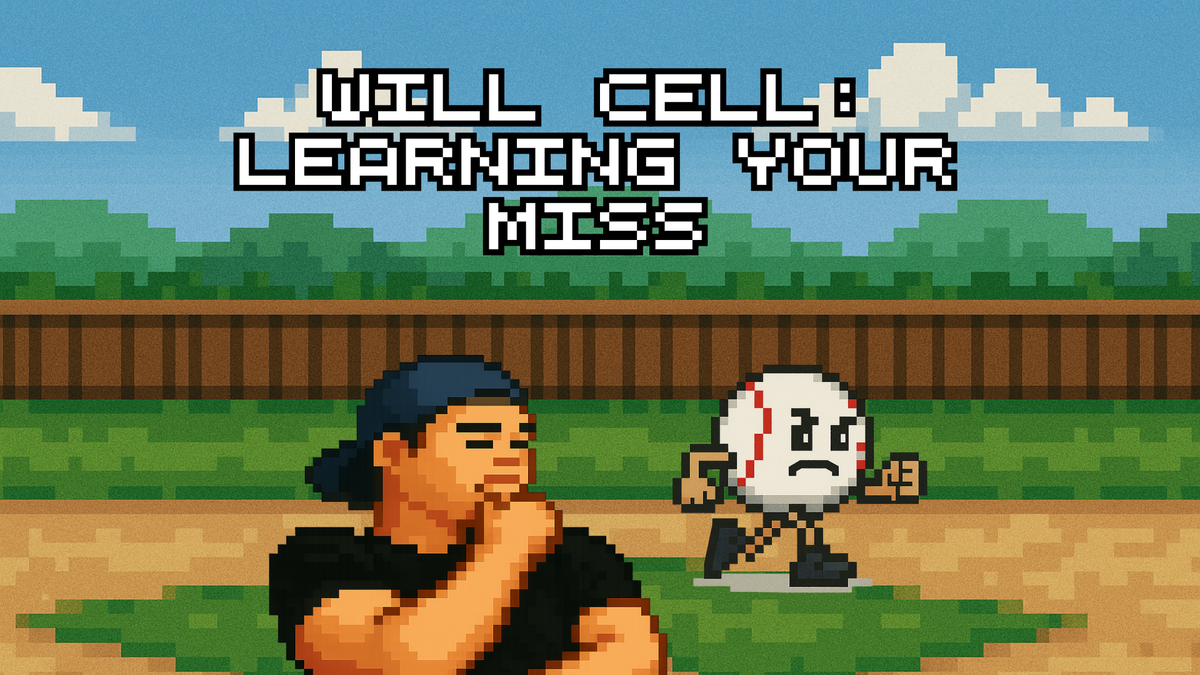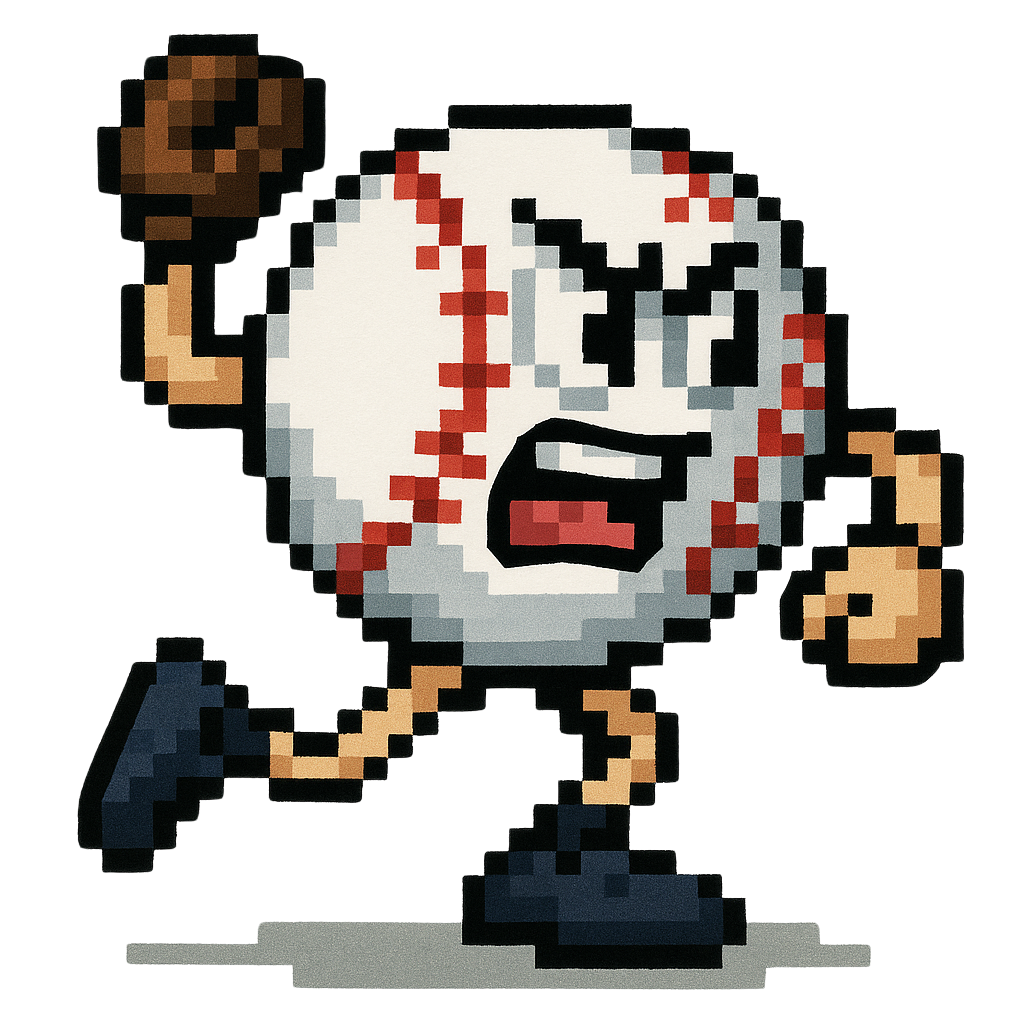Will Cell: Teacher-man, learning your miss, and why Aaron Judge is Good
Will Cell walks us through the snap and tilt swing ideology, along with his personal approach to hitting development

Washed-Up Baseball is here! I am excited and thankful to be posting my first article on the very day our website drops. Huge shoutout to Nate for getting us underway and giving ball players a medium to share their opinions.
Over here at Washed-Up Baseball, we have a couple die die-hard Seattle Mariners fans. Not only are we excited for a potential second playoff berth in 20+ years – never mind that we have been sitting at around .500 for a couple of weeks now – we are also excited to have a legitimate MVP candidate in Cal Raleigh’s Big Dumper. Though most are reasonably skeptical about Cal’s chances with Aaron Judge being the best Aaron Judge we’ve ever seen. To his credit, Cal plays almost every day, catches all but one or two games a week, and is one of, if not the best, defensive catchers in baseball, all of which should significantly improve his chances. He could very well have the statistically best catcher season of all time if he continues at this pace. But… he is not my MVP. The MVP to this point is Aaron Judge. The 6-foot-7 dude who has validated 64-year-old Richard Schenck’s, also known as Teacherman, revolutionary (a lot of adjectives could fit here) hitting method.
Ever since Aaron Judge became one of the best hitters in history and Schenck’s Tweets began to go viral on baseball Twitter, the “Snap-and-Tilt” method has been controversial. Here’s my basic breakdown of his theory. Schenck, who played baseball in college and hoped to help his son, who played youth baseball at the time, broke down video of Barry Bonds’ swing and attempted to completely replicate Bonds’ movements. Through experimentation and observation of more elite swings, Schenck found that the hitters he believed most “elite” balanced on their back leg, coiling and uncoiling their back hip against a firm front side, and had some form of barrel depth behind their head. He heard people like Alex Rodriguez talk about hitting directly down on the ball and was baffled because that wasn’t what hitters were actually doing. So Schenck began to try out what he saw these hitters doing, found success experimenting with his observed method, and began training athletes in the same way. What makes Schenck’s teachings so controversial is the extreme divergence from how the baseball swing has been taught for decades and how adamant he is that his way is superior. And hey, if you look at Aaron Judge, he might be right.
Aaron Judge isn’t the only one who has bought into Schenck’s method. MLB, minor leaguers, college, and high school hitters have adopted “Snap-and-Tilt.” Entire facilities like Optimal Power Performance in Arizona are dedicated to Richard Schenck’s approach. It’s not hard to pick out these dudes when playing with or against them, and it seems like they’re cropping up more and more. Whenever guys come across a “Snap-and-Tilt” hitter it goes one of two ways: either they bang, and people are like “whatever works” or their uphill swing causes them to swing and miss 12 times in four at bats and the reaction is “he’s an idiot for buying into that Teacherman stuff.” Most of the collegiate-level “Snap-and-Tilt” guys I saw did hit a bomb from time to time, but struck out twice a game. Nonetheless, these dudes exist at all levels of elite baseball, and several of them are the best guys around.
Schenck’s Twitter/X beefs usually went something like this. Schenck would post a video with a caption saying something like, “All elite hitters turn their barrel behind them. If you push the barrel, no matter what level you are at, you are not elite.” Many of these videos showcasing these “non-elite” hitters included former and current MLB players. And as weird as it is to think about an MLB swing as “non-elite,” there is a clear difference between the examples Schenck uses for non-elite and elite swings. His examples of elite swings feature hitters with visually better bat paths and barrel depth and, frequently, indisputable hitting success. Schenk is pretty good at picking evidence, too. He posts videos contrasting hitters during cold streaks vs. the same hitter during a hot streak, and most of the videos reflect some area of his approach. However, many players featured in these videos, on both sides of the coin, have responded, disagreeing with him or flat-out telling Schenck to never use their swing in a video again in words that aren’t quite as nice. Most famously was A-Rod. Alex Rodriguez countered Schenck’s use of his swing as an example to promote “Snap-and-Tilt,” explaining that his swing thought when playing was to bring the barrel directly down to the ball in a chopping manner. This is how many coaches for generations have taught the baseball swing, along with similar thoughts such as knob-to-ball. This premise is why I wanted to start making baseball content. Aaron Judge, Nolan Arenado, and Manny Machado have all been to Schenck’s facility, but some of the best hitters of all time scoff at it. I played with it for a few months my junior year of college – didn’t go well. But for some, it’s the difference between hitting .179 in your first 27 games and becoming one of the best power hitters of all time (Aaron Judge). Baseball is about adjusting, but it’s clear that an adjustment that may work for some will not work for all, no matter what it is. With so many opinions, advice, and feelings coming from coaches, you encounter the hardest part is deciphering which ones to implement and which ones to stay away from.
You’ve all heard the “everyone is different” speech. But it’s so true. The most important factor in determining which adjustments, methods, or queues to buy into is first understanding your miss. There are three ways we can miss a pitch: timing issue, pitch selection/recognition issue, or mechanical breakdown. If you’ve narrowed it down to a mechanical issue, the most important factor in making an adjustment is your miss. Your miss reveals your mechanical breakdown. If you want information about different kinds of misses, how to spot them, and ways to rectify them, check out our page and our future uploads on the topic.
I was always an oppo guy from the right side – very good at seeing the ball deep, holding my hands back for off-speed, and most of my extra base hits went to right center. However, I rarely backspun balls to the pull-side and consistently cheated to inside pitches or was jammed by them. I made emergency moves with my front side to anything inside, even when I was going well. My mechanical miss was allowing my barrel to drop and leaving it behind, resulting in a longer-than-necessary swing. The barrel lag I created forced me to cheat to inside pitches, causing me to roll over or pop them up to the right side because of my upward attack angle and over rotation. I look back at my decisions on how to train my swing with some regret because I worked on barrel depth when it was already something I naturally do. I bought into the Teacherman swing without realizing my miss is what he was trying to create for players. I will never discount a hitting approach because for someone somewhere it might work. For Aaron Judge, he needed to develop barrel depth and better posture, or whatever Schenck decided to emphasize. For me and many others, we need to think straight down to the top of the ball with the understanding that our swing will not actually look like that. This concept is known as “feel vs. real”. In other words, you need to find or create a feeling, a swing thought, a cue that results in the desired improvement in your real swing. But with all the feels that are suggested on Instagram or by the hundreds of coaches you encounter throughout your life, the only way to decipher and find ones that fit is by understanding your swing and where your miss is.
Richard “Teacherman” Schenck has shifted how hitting is thought about. He is probably the only baseball coach whose players can be visually separated from all the rest. His methods have been repudiated by many significant baseball players and minds, but for some, they bow down to it. Schenck and his followers are a testament to the individuality of baseball players. Too many of us are focused on the next hitting tool, the next method, the next advanced stat. What will allow your swing to play at the next level is not the same as the guy next to you. Baseball sucks for a bunch of reasons but this is one of the tougher ones: you can work incredibly hard, but if you’re not working at the right things, you won’t get better. Unfortunately, most of us won’t play long enough to learn this lesson. But once you learn it, how do you know what the “right things” are? On the offensive side, understanding your miss reveals your “right things”.

Comments ()